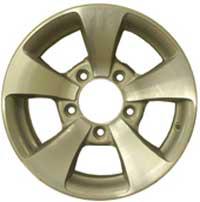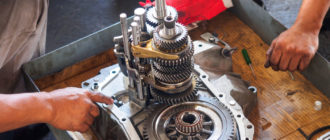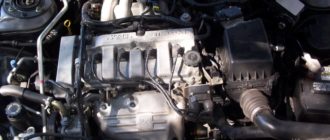The radiator hose plays a crucial role in a car’s cooling system. It carries the coolant from the engine to the radiator, ensuring that the engine stays at a safe operating temperature. Unfortunately, over time, these hoses can become worn, brittle, and cracked. This can cause coolant leaks, overheating, and even engine damage if left untreated.
If you’re experiencing any of these issues, it might be time to address a cracked radiator hose. Fortunately, fixing a cracked radiator hose is a straightforward and easy process that you can do yourself with just a few tools and some basic know-how. In this article, we’ll walk you through the steps to repair a cracked radiator hose so you can keep your car running smoothly and safely on the road.
So, whether you’re a seasoned gearhead or a newbie DIY-er, read on for our expert tips and tricks to fix a cracked radiator hose quickly and easily. With just a little bit of effort, you can save yourself time, money, and headaches in the long run.

Identifying and Repairing a Cracked Radiator Hose
source: https://cartreatments.com/radiator-hose-collapse/
A cracked radiator hose can be a major cause for concern for any driver. Not only does it affect the coolant flow to the engine, but it can also lead to overheating and serious engine damage. Fortunately, repairing a cracked radiator hose is a fast and easy fix that any driver can do themselves.
The first step in repairing a cracked radiator hose is identifying the problem. The most obvious sign of a cracked hose is coolant leaking from the engine compartment. It may also manifest as a visible crack in the hose or a bulge in the hose. If you suspect that your radiator hose is cracked, you should immediately stop driving your vehicle to prevent further damage.
Once you have identified the cracked hose, you will need to purchase a replacement hose from an auto parts store. Before removing the old hose, make sure to drain the coolant from the engine to prevent a messy and potentially dangerous spill. To remove the old hose, simply loosen the clamps at the ends of the hose and pull it off. Replace it with the new hose and tighten the clamps. Refill the coolant and check for leaks.
Regular inspection of your radiator hoses can prevent them from cracking and causing major engine damage. Be sure to check them for visible signs of wear and tear, such as cracking, bulging or leaks. Replacing a faulty hose is a fast and easy repair that can save you from expensive engine repairs in the long run.
Remember, a cracked radiator hose is not something to ignore. If you suspect that your hose is damaged, take action immediately to prevent serious damage to your vehicle. With a little bit of care and maintenance, your vehicle will run smoothly for years to come.
Gathering Materials for a Fast and Easy Fix: Repairing a Cracked Radiator Hose
When your radiator hose cracks, it’s important to act quickly to repair it to prevent further damage to your engine. Thankfully, repairing a cracked radiator hose is a fast and easy fix that can be done with just a few basic tools and materials.
The first step to repairing a cracked radiator hose is to gather the necessary tools and materials. You’ll need a replacement radiator hose, hose clamps, a utility knife, a pair of pliers, and gloves to protect your hands. You may also want to have a bucket or pan on hand to catch any coolant that may leak out during the repair process.
When selecting your replacement radiator hose, it’s important to choose a hose that matches the specifications of your vehicle. This information can usually be found in your vehicle’s manual or by contacting your local auto parts store. Once you have your replacement hose, you can begin the repair process.
- Step 1: Turn off your engine and let it cool down completely.
- Step 2: Drain the coolant from the radiator and the cracked hose.
- Step 3: Use your utility knife to carefully cut the cracked hose from both ends.
- Step 4: Attach the new hose to the radiator and the old connections using hose clamps.
- Step 5: Refill the radiator with coolant.
- Step 6: Start your engine and check for any leaks.
With the right tools and materials, repairing a cracked radiator hose can be a fast and easy process that can save you time and money in the long run. Remember to always wear gloves and take safety precautions when working with your vehicle’s engine.

source: https://www.napaonline.com/en/knowhow/radiator-hose-replacement
Fixing a Cracked Radiator Hose: Simple Yet Effective Solutions
A cracked radiator hose can cause serious problems if not fixed immediately. It can cause the engine to overheat, leading to expensive repairs. However, repairing a cracked radiator hose is not as difficult as it may seem. With a few simple tools and a little bit of know-how, you can fix it quickly and easily. In this article, we’ll explore some fast and easy solutions to repair a cracked radiator hose.
The first step in repairing a cracked radiator hose is to identify the location of the crack. This can be done by visually inspecting the hose for any visible signs of damage or leaks. Once you have located the crack, you can begin the repair process.
- Tape method: One of the easiest and quickest methods to fix a cracked radiator hose is to use a high-quality tape. Clean the surface of the hose where the crack is located and wrap the tape around it tightly. This will create a tight seal and prevent any further leakage.
- Clamp method: Another way to repair a cracked radiator hose is to use a clamp kit. Simply remove the damaged portion of the hose and attach the new hose piece with clamps at both ends. Make sure to tighten the clamps securely to prevent any leaks.
- Epoxy method: If the crack is bigger or more complicated, you can use an epoxy adhesive to fix the radiator hose. Apply the epoxy to the affected area and let it dry completely before using the hose again.
By using these simple methods, you can save money and time by repairing a cracked radiator hose yourself. Always make sure to regularly maintain and check all components of your vehicle’s cooling system to avoid any major problems in the future.
Testing the Repaired Radiator Hose
After realizing there was a problem with your car’s radiator hose, you were able to quickly and easily fix the issue with a repair kit. But how can you be sure that the repair was successful? The best way to test the repaired radiator hose is through a series of simple steps.
First, start the engine and let it run for a few minutes. Keep a watchful eye on the temperature gauge to see if it reaches the normal operating level. If it does not, this could be a sign that the repair was incomplete or faulty.
If the engine reaches the normal operating temperature, turn on the air conditioning to its highest setting. This puts additional stress on the engine’s cooling system and will help you determine if the repaired radiator hose can handle the workload.
If the temperature gauge remains steady and the engine does not overheat, it is safe to assume that the radiator hose was successfully repaired. However, it is still important to periodically check for leaks and inspect the hose for signs of wear and tear.
- Start the engine and run it for a few minutes
- Observe the temperature gauge
- Turn on the air conditioning to highest setting
- Check for leaks and inspect hose for wear and tear
Maintaining the Radiator System
The radiator system in your vehicle is essential for maintaining the correct operating temperature of the engine. Over time, the system can become worn or damaged, leading to leaks or cracks in the radiator hoses. Repairing these hoses may seem like a daunting task, but with the right tools and some knowledge, it can be a relatively fast and easy fix.
The first step in repairing a cracked radiator hose is to identify the source of the leak. This can often be done by inspecting the hoses for visible cracks or leaks. Once the damaged area has been located, you will need to remove the hose from the vehicle to begin the repair process.
There are several different methods for repairing a cracked radiator hose, including using duct tape or various types of sealants. However, the most effective and long-lasting solution is to replace the damaged hose with a new one. This can be done easily by purchasing a replacement hose from an auto parts store and following the instructions for installation.
- Before beginning any repairs, it is important to ensure that the radiator system is cool and free from any residual pressure.
- Always wear safety glasses and gloves while working on the radiator system.
- Regular maintenance of the radiator system can help prevent the need for future repairs. This can include routine inspections, flushing the system, and replacing worn or damaged hoses before they become a problem.
By taking proper care of your radiator system and addressing any issues as they arise, you can ensure that your vehicle runs smoothly and efficiently for years to come.
The signs of a cracked radiator hose include overheating, coolant leaks, a low coolant level, a strong odor of coolant, and visible cracks or splits in the hose itself.
Yes, a cracked radiator hose can cause engine damage if not addressed promptly. A low coolant level can cause the engine to overheat, leading to potential damage to the engine's internal components.
The tools needed to repair a cracked radiator hose include pliers, a utility knife, a hose clamp, and a replacement hose of the same size and shape as the original.
No, it is not safe to drive with a cracked radiator hose. Doing so can lead to engine damage and potentially dangerous situations such as overheating and loss of control while driving.
The time it takes to repair a cracked radiator hose varies depending on the severity of the crack and the experience of the person making the repair. Typically, it can take anywhere from 30 minutes to an hour to complete the repair.
While it is possible to repair a radiator hose with duct tape or a hose repair kit, it is generally recommended to replace the hose completely to ensure the repair is reliable and long-lasting.
The cost of replacing a cracked radiator hose can vary depending on the make and model of the vehicle, as well as the cost of labor in your area. Typically, the cost of the replacement hose and labor can range from $50 to $150.
While epoxy may provide a temporary fix for a cracked radiator hose, it is not recommended as a permanent solution. Epoxy may not withstand the heat and pressure of the coolant system and could fail, causing further damage to the engine.






